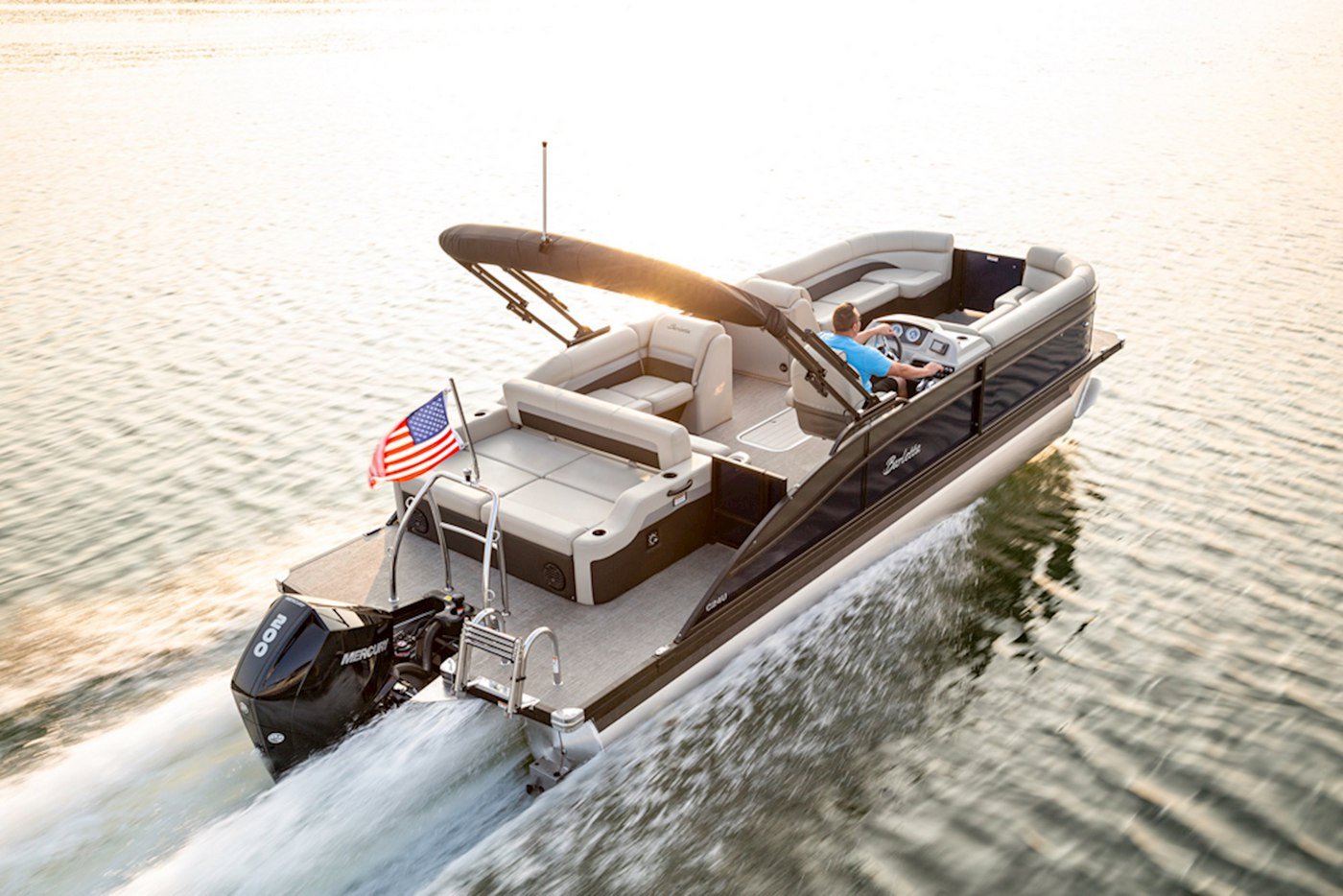5 Common Pontoon Boat Problems to Consider Before You Buy
While you research new pontoons, you may find that there are a handful of common problems you could run into once you take ownership. Whether you’re reading blogs, chat forums, or social media pages, you will find, like anything else, pontoon boats can have issues.
Don’t let these tidbits of information deter you just yet. These boats are man-made and can be less than perfect even when new. The most common issues we find as a manufacturer are usually fixable, warrantable, or sometimes, dare I say it, avoidable.
That said, I want to help you understand the most common problems with pontoon boats and how to avoid or work through them.
Here at Barletta Pontoon Boats, we’ve got a robust Owner Resource Center for this type of thing. I like to think of this as the toolbox you purchase when you buy a new home. You wouldn’t need that monkey wrench if the pipes never leaked.
I’m going to dissect the 5 most common problem areas of a pontoon boat and give you some insight as to why they would potentially rear their ugly head.
1. Tubes: Leaks, Discoloration, and Marine Growth
The tubes, or toons, of a pontoon, are the true heart and soul of the boat. They’re typically made out of aluminum and are filled with air. They keep the boat afloat and take the brunt of the waves. Playing such an important role, it’s important to know what could potentially go wrong.
Leaks
The worst-case scenario would be to have leaky toons. This could happen for a number of reasons and can be detrimental as it’s the only way a pontoon boat can sink.
Leaks can happen as a circumstance of numerous different events, consider the following:
- Default in the manufacturing process
- Hitting inanimate objects while underway
- Compromising the toons while on water or land
Luckily, many new pontoon boats have sectioned off toons that will isolate incoming water, keeping them from filling completely. Think Titanic, without the sinking. If the toons begin to take on water, this method of sectioning off the toons internally will allow you to drive the boat to safety and should save it from capsizing completely.
While shopping, look for brands that use this sectioning method and take it a step further with pressure testing. As the boat moves down the production line, some will connect an air hose to a valve in the toons to make sure air is not escaping from the welds. Clean welds are also a good sign that the tubes were made properly.
Discoloration
Another toon issue that’s very common is discoloration. Aluminum toons will oxidize in water. If you store the boat at the dock sitting in the water, the toons will oxidize quicker than if you store it on a lift. This is normal and unavoidable. To what extent the toons oxidize is really up to you.
There are products that can be applied to the toons to protect them and keep them looking newer longer, but it’s inevitable that aluminum will oxidize in water. Some manufacturers offer toon protection from the factory, if not, you can also find these products aftermarket.
For example, here at Barletta Boats, we offer a toon protectant called Metal Jacket, check it out to learn more. Regularly cleaning the toons will also keep them looking better longer. You can typically use a power washer or scrub brush, and they will clean up nicely.
Marine Growth
Cleaning marine growth off of the toons is critical. This is the build-up that’s produced by marine life found in the water such as scum, zebra mussels, and so on.
Too much marine growth on the toons can actually lead to performance loss and will cause you to lose speed while underway.
Annual cleaning is recommended, and more frequently if the boat sits in the water all season.
2. Electronics Going Dark
There are a handful of electronics on any given pontoon boat. You will typically find an audio system, depth finder, speedometer, and possibly even a fish finder. In newer boats, many of these amenities are packed into one device. It’s common for some of these items to run into issues. Whether the radio is spotty, you’re not getting a speed reading, or your battery dies, there are easy fixes for most of these problems.
Lost Radio Signals
Depending on the body of water where you boat, radio signals may not reach you, and you’ll experience a spotty radio connection. Luckily, in newer boats, you will find Bluetooth and other connectivity options such as XM compatibility. If you’re set on using FM/AM, there are aftermarket antennas that will help boost your chances of receiving a signal.
Most marine manufacturers include a standard-grade stereo system. They do this for many reasons including cost to the end-user and reliability. That said, if you’re looking for a system that’s going to rattle the paint off of your neighbor’s boat, you will need to look into aftermarket systems. Most stock audio systems will give you enough sound to jam out while at the sandbar but anything more, you’ll need to upgrade after you purchase.
Depth and Speed Readings
Depth and speed reading typically go hand in hand and are read by a transducer located on the bottom of the toon. If the transducer is out of position, it will not read the depth or speed. Something to keep in mind is that a transducer has the inherent inability to lose functionality once you hit about 15-20 MPH. You likely will not get an accurate depth reading once you hit that speed or higher. We’ve made a quick how-to video on correctly positioning your transducer.
Troubleshoot Depth and Speed Reading
Of course, none of this would be made possible without a healthy battery. Good battery maintenance is important especially if you store the boat for long periods of time. Smart practices for battery life longevity are; turning off your battery switch between uses, disconnect one side of each battery during the long storage periods, and try to prevent storing batteries in freezing conditions if possible.
If you’re lounging on the sandbar all day and using the radio on battery power alone, I recommend running your engine for about 20 minutes when the day is over. This will help recharge the battery that was used during that time. All of these tips will help prolong the life of your boat’s battery.
Protecting your marine electronics is crucial to their lifespan. If you think about it simply, you’re using electronics on the water, outdoors, in the elements. There are bound to be hiccups that you will experience, so keeping up on maintenance is important. There are great resources that specialize in this such as Sick Speed Marine Electronics, which will teach you tips and tricks for prolonging your devices and keeping your electrical system happy.
3. Furniture Aging
The furniture on a pontoon is one of the most eye-catching elements of the entire boat. That said, when it begins to age, it’s quite noticeable.
Most pontoon furniture is made out of marine-grade vinyl. It holds up to the elements, wet bathing suits, and even the occasional spilled cocktail. But like anything, over time, it will show its age.
There are ways to combat the more typical signs of furniture wear like mildew spots, rips, tears, and fading. It’s important to care for the furniture starting immediately upon taking possession of the boat and remember, treat it like you’d treat the sofa in your living room.
An easy way to keep your furniture looking new and stain-free is to wipe it down frequently with mild soap and water using a non-abrasive cloth. This will help keep those mildew spots away even if there’s not any noticeable dirt on the surface, it’s important to clean off mildew causing bacteria. Doing this will also help keep water spots to a minimum.
When you wipe down the furniture, leave the seat cushions opened up for an hour or two. This will let airflow in and prevent moisture in seat backs and other close-fitting areas on the interior. Do not use any type of vinyl protectants including UV inhibiting products. These can often develop a tacky surface and actually attract dirt.
Another element that will age over time is the playpen cover, which is the canvas that covers the entire boat protecting the furniture from the elements when not in use. Many people store the cover in the ski locker which can develop moisture buildup and penetrate the canvas. Doing so will not only stain the canvas, but it will also become weaker over time.
While you’re using the boat, we recommend storing the cover in a dry place with good airflow. This will extend the life of your playpen cover.
4. Dealer Support
The relationship you build with your dealer will be just as important as the boat staying afloat. They are the lifeline to your boating experience and should be your go-to resource for anything you need, be it service, parts, annual maintenance, and so on. You may experience a lack of support if you don’t take the following factors into consideration.
It’s imperative that you buy where you boat. This means your dealer should be located near the body of water that you boat on. There are numerous reasons for this, mainly ease of service and prompt attention to your needs. If you live three hours away from your dealer, you cannot expect them to travel to service your boat.
On that note, most dealers will give priority to those who have purchased from them. We often hear buyers who are upset that the local dealer they didn’t buy from won’t service their boat in a timely manner. There are a small number of boat dealers to boat owners, so it’s critical that you build that relationship starting with the sale of your boat with your nearest dealer.
Something to note when new to boating is that many marine dealerships are not as sophisticated, and may not be able to meet the expectations you would normally have of a local car dealership for example. While the intentions to meet your expectations are always there, sometimes the resources to do it are not.
Developing a relationship with your dealer is critical to fostering great communication and service for years to come.
5. Engine Performance
One of the most critical elements of boating is engine performance. Of course, mechanical issues can happen, just like with any vehicle. However, there are a few common issues that come up which are totally avoidable if you know how to choose the right engine from the start.
You may hear boaters complain about not having enough power from an engine they thought would perform better. This happens when too small of an engine is put on too large of a pontoon. You cannot expect to get max horsepower out of an engine that’s too small for the boat it’s pushing.
Your dealer should be able to give you an idea of the performance you can expect out of the engine you choose based on the size of the pontoon you’re putting it on. There are also other great resources such as this data bulletin by Mercury Marine that will give you insight to the exact performance certain engine/boat combinations will give you.
Another avoidable issue is to make sure you have the proper steering selection for the size engine you choose. If you want your boat to steer like a car, you need to consider hydraulic and/or power assist steering. If you don't mind flexing a little muscle when steering your boat, mechanical might be for you.
Some manufacturers will even cap the amount of horsepower you can choose in relation to the type of steering you pick. It can actually be dangerous if you have the wrong steering vs. horsepower combo. Discuss these options with your dealer extensively and test drive different steering types so that you know what you’re getting before you buy.
There are a few other nuances that will save you the headache of diagnosing why the engine is not performing as it should. Having the correct propeller for your engine type is key. Again, your dealer should know exactly what type of propeller you need, but sometimes this goes overlooked.
Making sure the propeller is affixed correctly to the boat is another flaw we see from time to time and it’s an easy fix. We’ve included a video on this topic because it’s such a simple way to get the most out of your engine’s performance.
The Right Propeller For Your Boat
Engine performance can make or break your day on the water. If the engine’s performance does not live up to your expectations, you will not be satisfied with your purchase. Your dealer is the best option for diagnosing these problems. Many times, getting actual eyes and hands on an engine are critical to diagnosing any issues that might arise.
Getting Past Problems With Pontoon Boats
Now that I've shined a little more light on some of the main issues that you could experience with a pontoon boat, I hope it’s helped ease your fears and shows that with a little preventative action, many of these problems can be avoided. Keeping up with regular maintenance will save you the headache of dealing with the majority of common problems.
There is a growing number of online resources and online communities that are informative and helpful if you do run into a small issue that can be addressed without pulling the boat and taking it in for service.
If you’re overwhelmed and think, there’s no way I can tackle these issues on my own, you’re not alone. If you’ve built a strong relationship with your dealer they will take care of you. That relationship is a critical part of owning your boat and enjoying it through the entire season.
Another great way to shop around for after-the-sale support is by checking out what different manufacturers have to offer for their owners. Our Owner Resource Center grows daily as we listen to our Barletta family and take their needs to heart. Many brands also offer an owner community through private Facebook pages that are awesome resources once you take possession of your new boat.



